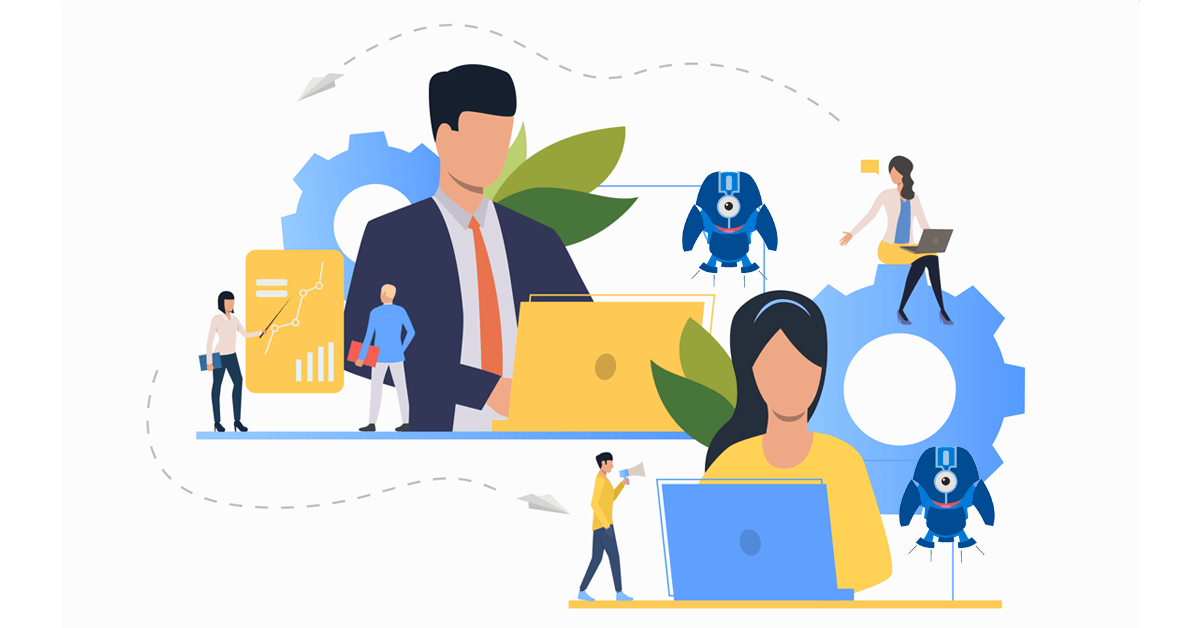4 Ways Intelligent Automation Helps at Work
In this time of digital transformation, Robotic Process Automation (RPA) software bots have been part of many businesses in accelerating their back-office functions. It helps organizations to step-up and stimulate their processes in areas like finance, accounting, and human resources.
Robotic Process Automation (RPA) is a form or automation that allows anyone to define a set of instructions or rules for robots to perform. RPA bots mimic repetitive human-computer interactions and carry out a ton of error-free tasks, at high volume and speed. These repetitive tasks may cost lots of money and time that can be saved by automating it. Robotic process automation allows employees to complete their tasks faster and perform higher-value work.
Software bots evolved with its advanced features such as Artificial Intelligence (AI) and analytics. This evolution produces intelligent automation, which upgrades every process across the industry. With the development of its features, intelligent automation can now aid not only the back-office processes of an organization but also its front offices.
Intelligent automation is the combination of two advanced technologies- AI and RPA.
For a long time, we believed in the concept that working as a team will bring more success to work processes than just relying on one individual, as what they say, “two brains are better than one.”
Even today and looking forward to the future that intelligent automation enters the discussion, the idea that having a team do a certain task as more powerful than letting it be done by a sole individual remains. That is why we now have the concept of “human-in-the-loop,” a process that redefines the meaning of a team as the collaboration of humans and artificial intelligence bots.
There are several ways how human-in-the-loop automation can help your business functions.
1. One user – one bot
It is an automation wherein a single user interacts with only one bot. This combination is ideal for a simple service request with a few applications where exceptions are uncommon. With this human-machine collaboration, a user could prompt the bot to produce a report with information from two different sources. This one is helpful for simple tasks but limited for more complex task.
2. One bot – many users
This human-machine teamwork is beneficial when the need to disseminate similar data over a group of people arises. It takes the form of informational chatbots for group chats. For instance, you need to distribute to-dos across the team and the bot will notify the right team about the pending requests for the day. The information can be easily accessed by that certain group of people who needs to take the action for a specific task.
The human resource department can use this collaboration when disseminating memos and announcements for its employees.
Through this collaboration, a reverse can also occur, where the bot takes inputs from more than one user synchronously but for that to happen, a more complex workflow must be identified.
3. One user – many bots
This is a collaboration between a single human user and multiple bots. For example, an employee needs to organize a company event and wants to use the finance bots. The employee triggers Bot 1 to book the event’s place. Afterward, the employee re-enters information to set off Bot 2 to book a catering service. Subsequently, an employee re-enters data again to prompt Bot 3 to set an appointment and book for a digital team to handle the coverage of the event. This collaboration is beneficial for the employee to perform the given tasks one by one in a faster way.
4. Many users – one bot – many bots
This human-bot teamwork is an indication that a human-in-the-loop automation’s utmost effectiveness is achieved. This is a collaboration where one bot can set up an interaction between multiple users and multiple bots. One good example of this is a digital assistant at work.
Telecommunications companies use this kind of technological collaboration in disseminating information nationwide. Say, for instance, users from the company trigger a single bot to make a public service announcement to be received by multiple bots or technologies. Afterward, all mobile phone users will be notified of the announcement made by the company.
Intelligent automation is beneficial for businesses and organizations in this golden era of digital transformation, where everyone is innovating their processes to function better and to keep an edge for the future. Through human-in-the-loop automation, you are letting your employees focus on more important tasks while allowing the machines to do the rest of their repetitive tasks. Rather than replacing man with machine, human-in-the-loop automation bridges human and technologies and redefines the power of teamwork.





